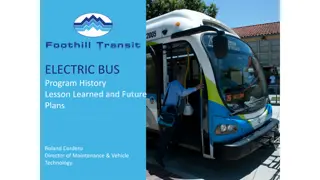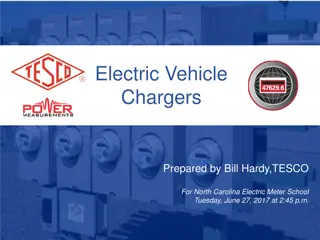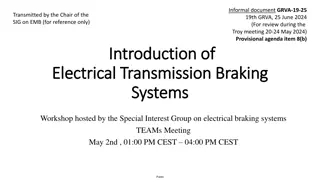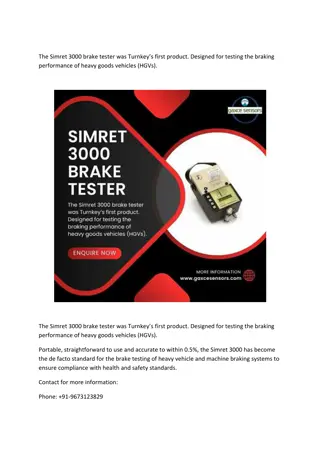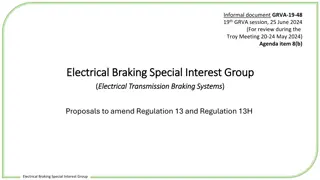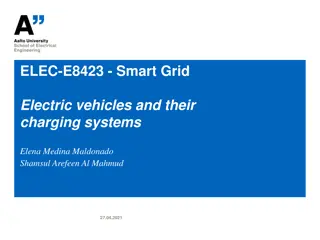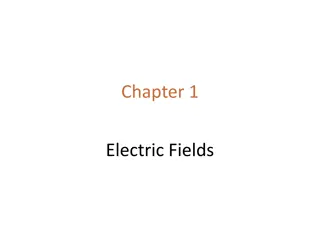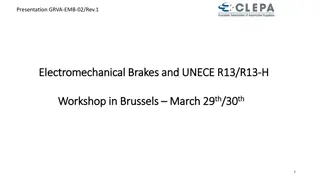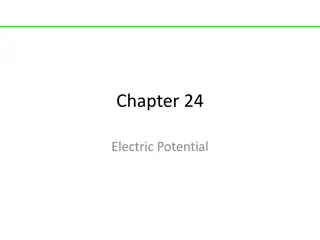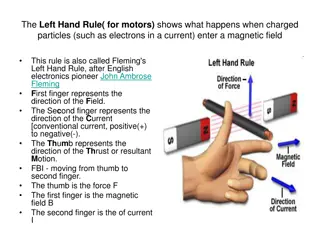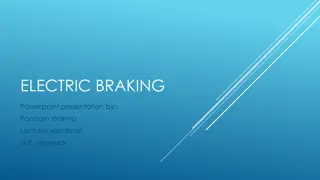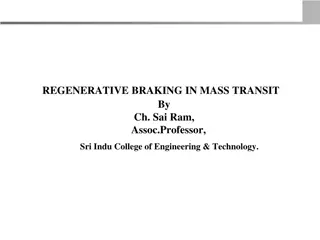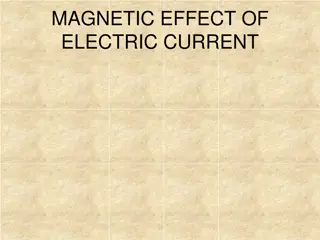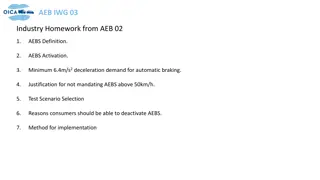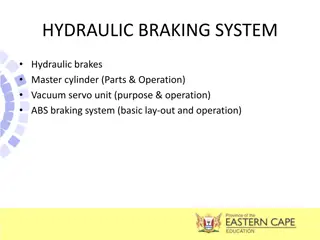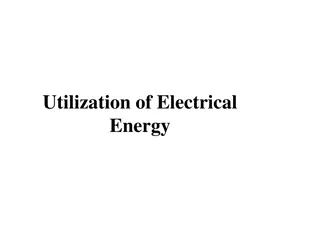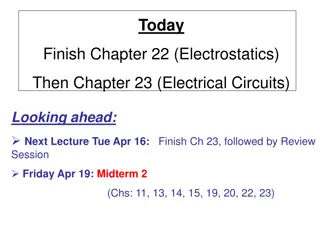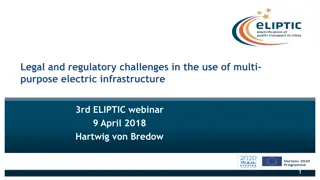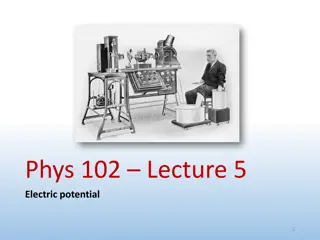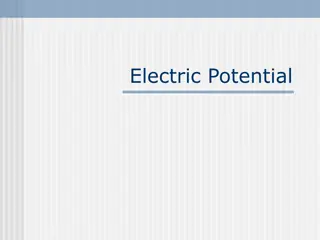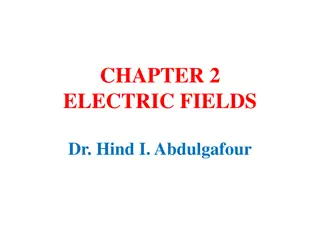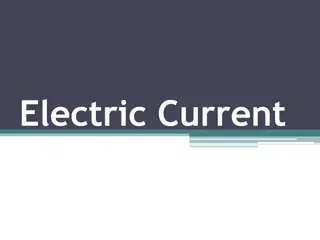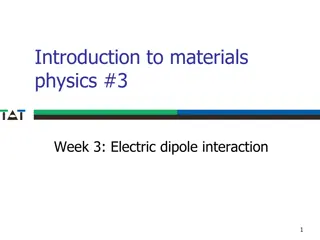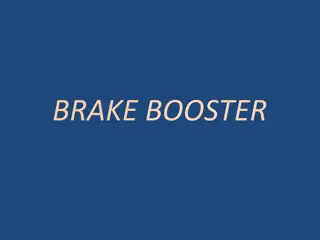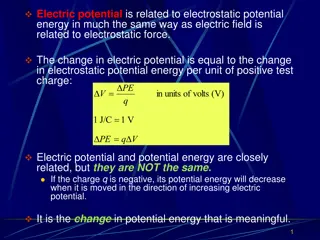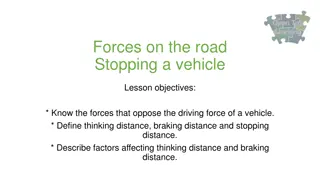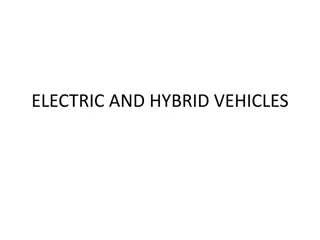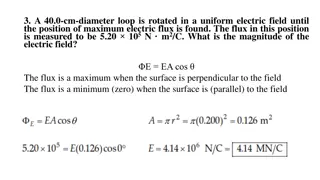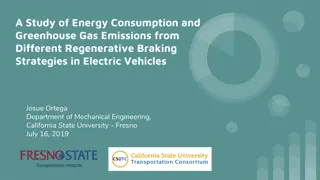Revolutionizing Electric Mobility: Welcome to Electric Green
Experience the future of electric transportation and energy solutions with Electric Green, a pioneering company dedicated to innovation and sustainability. Discover cutting-edge electric vehicles, lithium-ion batteries, and forward-thinking practices that aim to reshape the way we live and move. Joi
1 views • 7 slides
North America Electric Scooter Market
\nNorth America Electric Scooter Market by Vehicle Type (Electric Motorcycles, Electric Mopeds, E-scooters & Bikes), Power Output (Less than 3.6kW, 3.6kW to 7.2kW), Battery Technology, Motor Type, Charging Type, End User, and Country - Forecast to 2030
0 views • 3 slides
Foothill Transit Electric Bus Program Overview
Foothill Transit's electric bus program, led by Roland Cordero, Director of Maintenance & Vehicle Technology, has made significant strides since its inception. With a focus on innovation and sustainability, the program has deployed a fleet of fast-charge and extended-range electric buses across vari
3 views • 17 slides
Electric Vehicle Chargers.
Explore the world of electric vehicle chargers, EVSE market trends, and the increasing popularity of electric vehicles. Learn about the growth in charging infrastructure, market statistics, major auto manufacturers' plans for introducing electric vehicles, and strategies to address range anxiety and
1 views • 56 slides
Introduction of Electrical Transmission Braking Systems Workshop
The Special Interest Group on electrical braking systems is hosting a workshop to discuss the drafting principles, terminology, and indicators related to electrical transmission braking systems. The workshop aims to identify safety critical elements, propose amendments to UN Regulations, and make re
1 views • 29 slides
The Simret 3000 brake tester was Turnkey’s first product
\n\nThe Simret 3000 brake tester was Turnkey\u2019s first product. Designed for testing the braking performance of heavy goods vehicles (HGVs).\nPortable, straightforward to use and accurate to within 0.5%, the Simret 3000 has become the de facto standard for the brake testing of heavy vehicle and m
1 views • 2 slides
Electric powertrain
The Electric Powertrain Market investigates the global shift towards electric propulsion systems in vehicles. It analyzes trends in electric motors, batteries, and power electronics driving the transition from internal combustion engines to electric powertrains.
0 views • 7 slides
Proposal to Amend Regulations for Electrical Transmission Braking Systems
The document covers proposals to amend Regulation 13 and Regulation 13H for electrical braking systems, focusing on electrical transmission braking systems. It discusses changes in requirements, provisions, and special additional requirements, along with workshops and meetings by the Electrical Brak
0 views • 15 slides
Smart Grid and Electric Vehicles: Charging Systems and Development in Finland
This presentation delves into the introduction of electric vehicles in Finland, highlighting the current status, charging infrastructure, key factors for development, and smart charging solutions. It discusses various aspects such as electric vehicle models, charging systems, plug types, and wireles
2 views • 16 slides
Understanding Electric Fields: Chapter 1 Overview
Delve into the fundamental concepts of electric fields in Chapter 1 as we explore properties of electric charges, charging objects by induction, Coulomb's Law, the electric field, electric field lines, and the motion of charged particles in a uniform electric field. Discover how electric forces shap
1 views • 10 slides
Advancements in Electromechanical Brakes for Vehicles Presented at Workshop in Brussels
Overview of new technical concepts and the scope of Electro-Mechanical Brakes (EMB) amendment, focusing on electric transmission and energy efficiency improvements. The presentation covers the motivation, advantages, and principles of EMB, emphasizing the elimination of noise emissions, improved bra
0 views • 37 slides
Understanding Electric Potential and Work Energy Principle in Physics
Exploring electric potential and work energy principle in physics, this content discusses the conservative nature of electric force, potential energy of charges, electric potential energy calculations, and work done by external agents to move charges. Practical problems and theoretical concepts are
0 views • 59 slides
Proposal to Amend PBC Reference for AEBS in Vehicles
The proposal aims to update the Peak Braking Coefficient (PBC) reference for Advanced Emergency Braking Systems (AEBS) in vehicles by adopting newer methods that consider the improved tire technology and road conditions. It suggests using updated ASTM standards and testing methods to align PBC value
1 views • 5 slides
Understanding Fleming's Left Hand Rule and Electric Motors
Fleming's Left Hand Rule, also known as the Left Hand Rule for Motors, explains the interaction between charged particles and magnetic fields. Electric motors utilize this principle to convert electrical energy into mechanical energy through the interaction of magnetic fields and current-carrying co
2 views • 6 slides
Understanding Electric Field Lines and Charges
Electric field lines provide a visual representation of the electric field around charges. They show the direction of the electric field and help understand the intensity of the field at different points. Field lines never cross each other and the tangent at any point on a line gives the field direc
0 views • 40 slides
Understanding Electric Braking Systems
Braking is the process of reducing the speed of moving or rotating equipment, such as vehicles or locomotives. This presentation by Poonam Sharma covers the classification of braking into Mechanical and Electrical categories, highlighting the advantages and disadvantages of each. It delves into type
0 views • 28 slides
Electric Current and Resistance: Lecture Highlights and Mid-term Exam Reminder
Today's lecture covers topics on electric current, resistance, Ohm's Law, resistors, resistivity, electric power, and microscopic views of current flow. Important announcements include reading assignments, mid-term exam details, online class rules, and exam guidelines. A refresher on electric curren
0 views • 19 slides
Regenerative Braking in Mass Transit: Harnessing Energy Efficiency
Regenerative braking in mass transit is an energy recovery mechanism that slows down vehicles while converting the generated power for immediate use, storage, or redistribution. This technology, while not entirely new, offers opportunities for increased energy efficiency, reduced maintenance costs,
3 views • 11 slides
Exploring the Magnetic Effect of Electric Current
Understanding electromagnetism involves recognizing how an electric current in a conductor generates a magnetic field around it. This phenomenon was first observed by Hans Ørsted in 1820, leading to discoveries about magnetic field patterns for various conductor shapes. By studying straight wires,
0 views • 30 slides
Advanced Emergency Braking System (AEBS) Definition and Activation Guidelines
The provided content outlines the definition and activation requirements of the Advanced Emergency Braking System (AEBS). It covers the phases involved, including Collision Warning and Emergency Braking, as well as the speed limitations for activation. The system aims to automatically detect potenti
0 views • 12 slides
Understanding Hydraulic Braking Systems in Vehicles
Hydraulic braking systems play a crucial role in controlling the speed and stopping vehicles safely. Components such as master cylinders, tandem cylinders, and vacuum servo units work together to ensure efficient braking performance. The system's construction includes calibrated springs and outlet v
4 views • 20 slides
Understanding Chemical Effects of Electric Current
The chemical effects of electric current involve reactions in conducting solutions through which an electric current passes. This phenomenon leads to various effects like electroplating, formation of gas bubbles, deposition of metals, and changes in solution color. Conductors play a vital role in al
5 views • 17 slides
Utilization of Electrical Energy in Industrial Applications
Electrical energy is widely utilized in various industrial applications, including driving loads with electric motors, electric heating, and welding operations in manufacturing processes. Electric drives offer advantages like low maintenance cost, high efficiency, and easy speed control. Factors to
0 views • 53 slides
Understanding Electric Current in Circuits
Electric current is the flow of electric charge between regions of different electric potential. This flow of charged particles, such as electrons, is essential for circuits to function effectively. Voltage sources, such as batteries or generators, maintain a potential difference necessary for susta
0 views • 31 slides
Legal and Regulatory Challenges in Multi-Purpose Electric Infrastructure
The use of multi-purpose electric infrastructure presents legal and regulatory challenges in connecting the energy and public transport sectors. Uncertainties in current energy laws, complex requirements, and exposure to multiple taxation pose risks. This webinar explores interactions between public
0 views • 20 slides
Advancing Electric Commercial Vehicles: SEA Electric's Innovation Journey
Explore the pioneering work of SEA Electric, a Victorian automotive technology company leading the charge in developing efficient 100% electric vehicle drivetrains for commercial use. With their SEA-DriveTM technology and exclusive models, SEA Electric is spearheading the transition towards sustaina
0 views • 10 slides
Understanding Electric Potential in Physics
Today's lecture covers the concept of electric potential, superposition principle, representation with equipotential lines, relation with electric field, and applications like Electrocardiogram (ECG). It explains the definition of electric potential, its scalar nature, and calculation examples invol
0 views • 22 slides
Understanding Electric Potential and Energy in Physics
Electric potential and energy play essential roles in physics, influencing the behavior and interactions of charged particles in electric fields. This content explores concepts like electric potential, gravitational potential energy, electric potential energy of point charges, and the work involved
0 views • 28 slides
Understanding Electric Circuits: Basics and Examples
An exploration of electric circuits, including their components, symbols, and the flow of current. Learn about examples of electric circuits used in devices like televisions and loudspeakers. Test your knowledge with questions on circuit symbols, the definition of an electric circuit, and examples o
0 views • 11 slides
Understanding Electric Fields: Fundamentals and Concepts
Electric fields are created by surrounding charges and are represented by vectors indicating the force experienced by a test charge. Electric field lines help visualize the direction and strength of the field, with denser lines indicating stronger fields. The electric field due to a point charge can
0 views • 13 slides
Physics Chapter 23 Problems Solutions
Explore solutions to various physics problems from Chapter 23, including calculating electric forces between protons, resultant electric force on charges, mass of charged objects in electric fields, electric field and forces between point charges, and calculating particle speeds in electric fields.
0 views • 17 slides
Understanding Electric Current and Electric Potential Difference
Electric current is the flow of electrons moving from one point to another, measured in amperes. The direction of current follows convention, even though electrons actually move oppositely. Current is calculated using the total charge passing a point in a given time. Electric Potential Difference (E
0 views • 22 slides
Understanding Electric Dipole Interaction in Materials Physics
Dive into the world of electric dipole interaction in materials physics, exploring topics such as electromagnetic wave properties, force acting on electric dipoles, potential energy calculations, and the representation of waves through phasors. Learn about the differences between electromagnetic wav
0 views • 22 slides
Understanding Brake Boosters in Automobile Vehicles
Brake boosters are essential components in power brake systems, enhancing braking power with minimal pedal pressure. A malfunctioning booster can make the brake pedal hard to push. Constructed with five parts, the booster utilizes pressure differentials to aid braking. Various types of boosters are
0 views • 6 slides
Understanding Electric Potential and Its Relationship to Electrostatic Energy
Electric potential is intricately linked to electrostatic potential energy, much like how electric field correlates to electrostatic force. The change in electric potential equals the change in electrostatic potential energy per unit positive test charge, expressed in volts. By exploring scenarios s
0 views • 24 slides
Understanding Forces and Stopping Distances in Vehicle Safety
Explore the forces that oppose vehicle motion, and learn about thinking distance, braking distance, and stopping distance. Discover how factors affect these distances, such as friction and reaction time. Gain insights into how friction helps in braking systems and the impact of accelerating or braki
0 views • 16 slides
Understanding Electric and Hybrid Vehicles: Hybridization and Interdisciplinary Aspects
Electric and hybrid vehicles (HEVs) feature different hybridization ratios based on the power rating of their electric motors. Concepts like full hybrid, mild hybrid, and micro hybrid define the extent of electric motor usage for driving. HEVs involve a mix of electric machines, power electronics, b
0 views • 50 slides
Electric Field and Flux Calculations in Different Geometries
Explore various scenarios involving electric fields and flux calculations, such as finding the magnitude of electric fields in different situations, determining electric flux through surfaces, assessing net electric flux through charges in a submarine, and analyzing flux through faces of geometric s
0 views • 13 slides
Study on Regenerative Braking Effects in Electric Vehicles
Investigating the impact of regenerative braking strategies on energy consumption and greenhouse gas emissions in electric vehicles, this study by Josue Ortega from California State University - Fresno delves into improving regenerative braking system performance through data analysis and calculatio
0 views • 18 slides
Enhancing Consumer Protection in Connecticut's Electric Supplier Enforcement
This content discusses various initiatives and regulations in Connecticut aimed at promoting transparency and protecting consumers in the electric supplier market. Topics covered include electric bill clarity, a ban on variable rates, data showing differences in costs between supplier and standard s
0 views • 17 slides


